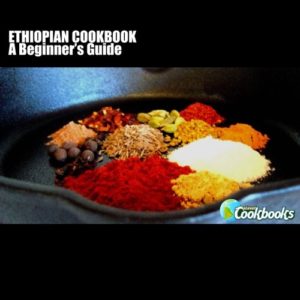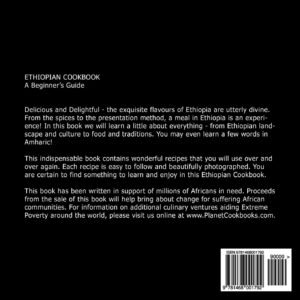Dr. Susan’s Summer Experiment: Ethiopian Cuisine Blog #2

Sunday Night Supper- Doro Wat (Spicy Chicken Stew)
The Ethiopian word “wat” means “stew,” and usually a spicy one. Wats can be made from beef, lamb, poultry, chickpeas, zucchini; you name it. They are flavored with a spice called berbere, which can vary from moderately tingly to fiery hot. Every household in Ethiopia seems to have its own berbere recipe and takes pride in it, rather like barbecue sauce here in Texas. I did not attempt to make my own, because spices are best when fresh. Storing quantities of raw ingredients like fenugreek and cardamom pods only to have them lose their potency would be expensive and wasteful. Unable to find berbere in my local grocery, I resorted once again to Amazon. A two-ounce bottle of Zamouri brand cost me $8.95. This formula may be mild for some tastes, but it suited us just fine.
My Cookbook
I turned to my trusty Beginner’s Cookbook for the recipe (7), using boneless, skinless chicken thighs. Given a choice among oil (presumably olive), butter, or niter kibbeh, I decided to go with butter. One day I will be brave enough to make my own niter kibbeh, a clarified spiced butter, but this was not the day. I chopped the onions and garlic very fine by hand rather than run them through the food processor because I like a more regular texture. The red wine I used was a cheap but delicious California Cabernet from Matthew Fox vineyards.
Lesson Learned
Surprisingly, my stew took considerably longer to reduce than the 45 minutes specified in the recipe. I cooked the wat down until the chicken thighs shredded easily with a fork and the liquid was almost gone. The final consistency would have been perfect for scooping up with injera, which is the traditional way of serving wat. In fact, this doro wat is so rich and flavorful that it is almost too much without a starch for balance. I did not have bread on the table Sunday night when this dish made its debut, although the potatoes in the tikil gomen (hot cabbage salad) served to balance the flavors somewhat. Today I served leftovers in a pita pocket for lunch, and the bread decisively resolved the mild excess of the plain wat. Lesson learned: always serve bread with doro wat, if not injera then a chewy flat bread of some sort.
Our Meal
Whole hard boiled eggs can be served with wat, but I chose not to use them this time. As you can see by the photo, the plate was already pretty full. Starting from the top going clockwise you will see quia (a tomato and cucumber salad with a tangy dressing), the doro wat (sorry for the shadow in the photo), and leftovers of the tikil gomen from the other night. Once again the meal is served on a salad plate, and each serving of hot food is about 1/3 cup. For the quia, I just made up a small amount that the two of us could consume at one meal.
Overall I would say this doro wat recipe was a success. I will make it again. I hope to try it with zucchini. Summer crops will start flooding local gardens and friends start begging me to take their extra squash off their hands. My next post will be a few days hence, because we still have leftovers to gobble up before I make any more new dishes. Until then, enjoy!
Dr. Susan
If you loved this blog, please share it, provide comments below, or reach out to me.
Latest posts by Cindy Stevens (see all)
- Hydration Matters - March 26, 2024
- Limited Time to Exercise - March 26, 2024
- A New Day A New You - January 12, 2024
- Hello 2024 - January 5, 2024
- Food Prep Time - December 29, 2023







